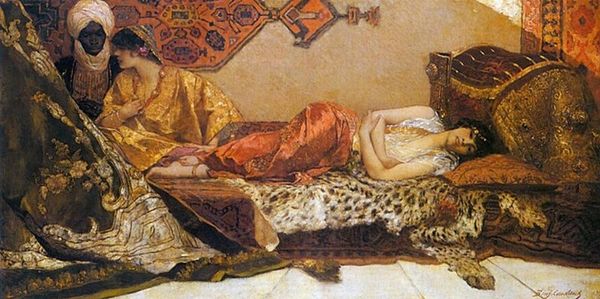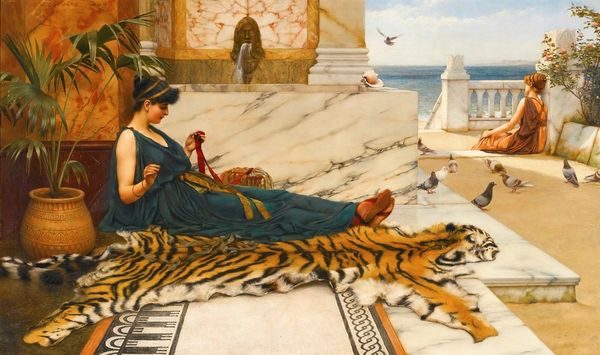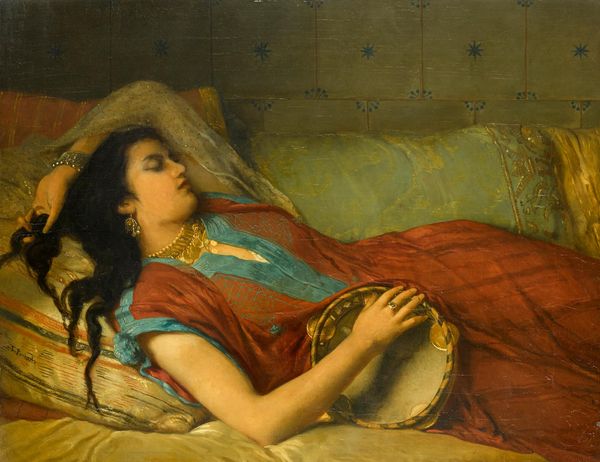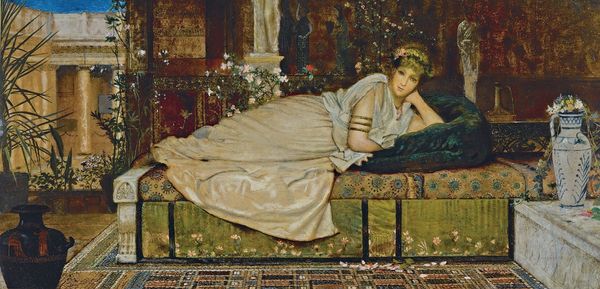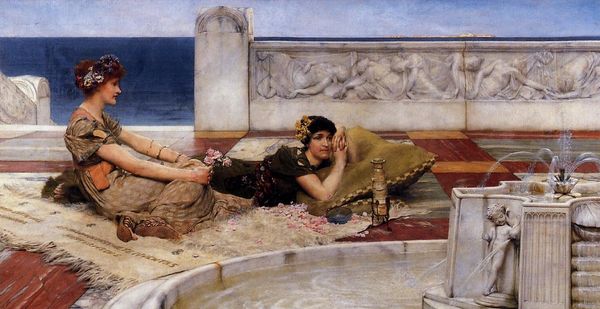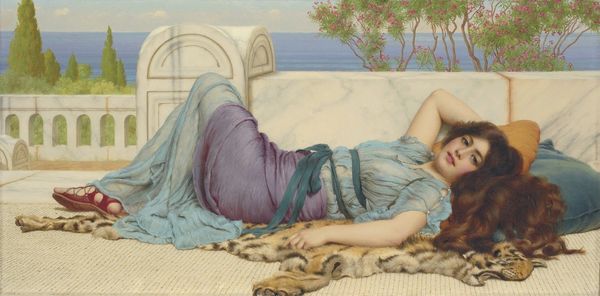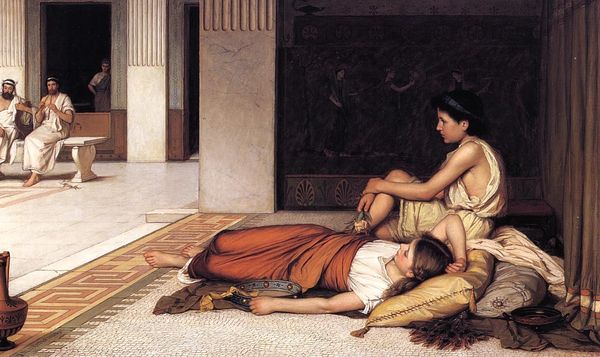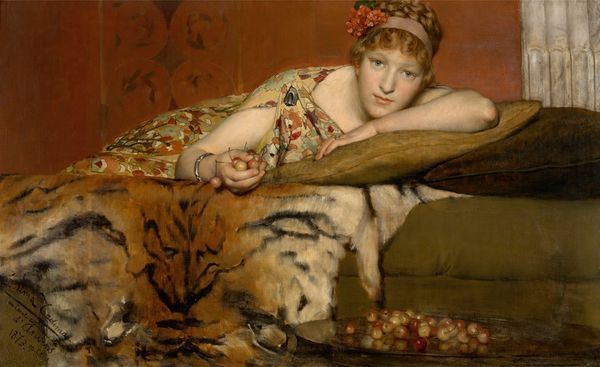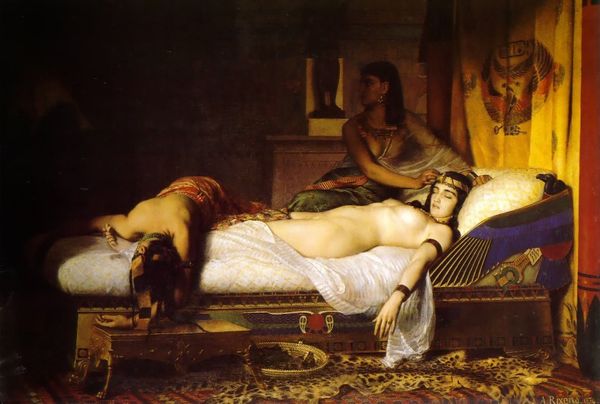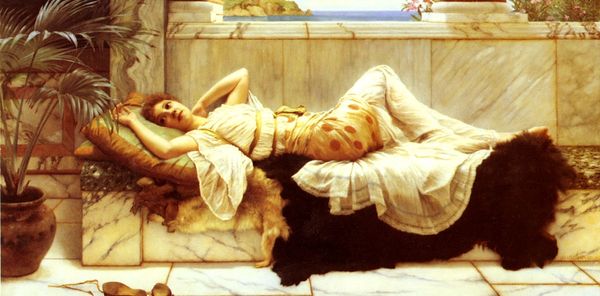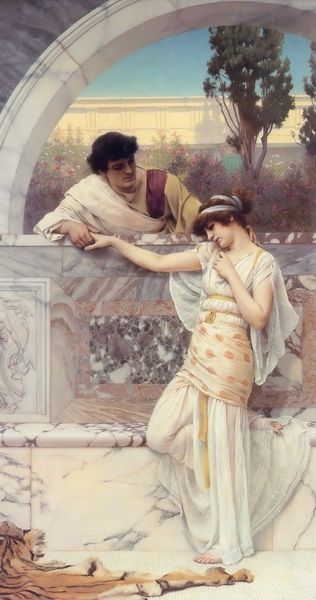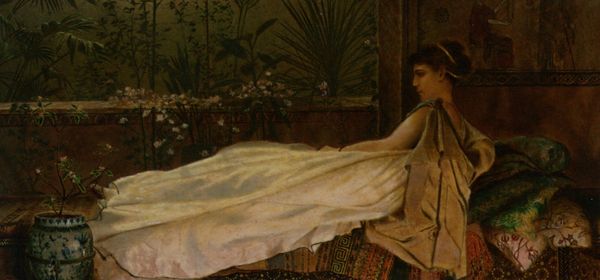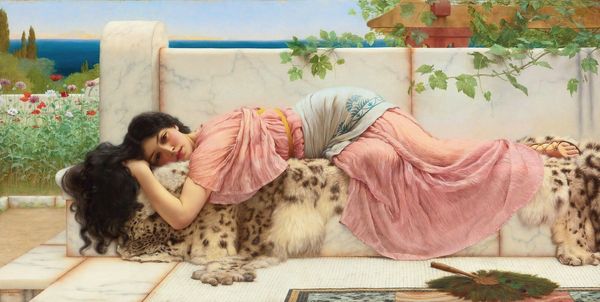
painting, oil-paint
#
painting
#
oil-paint
#
landscape
#
figuration
#
intimism
#
classicism
#
genre-painting
#
history-painting
#
academic-art
#
realism
Copyright: Public domain
Curator: Lawrence Alma-Tadema's "Water Pets", a painting that invites us to consider not only its aesthetic qualities but also the labor and material conditions that brought it into being. Editor: It exudes a serene stillness. The light, the mosaic floor, and the languid pose of the woman all contribute to an atmosphere of tranquility. What details stand out to you? Curator: Immediately, it’s the marble mosaic floor that seizes my attention; the immense labor that would have been required, particularly within the context of the broader artistic and artisanal practices. This highlights the artist's material understanding. Editor: Absolutely, I'm struck by the woman's gaze—it hints at introspection, doesn't it? The composition draws your eye across the detailed mosaics, finally resting upon the pensive figure. One begins to ponder her role within this tableau of domestic leisure. Curator: Domestic leisure is key here! Alma-Tadema's art often presents an idealized vision of the past. How complicit are we, as viewers, in consuming such imagery, often disconnected from its production? Editor: That's a piercing question. Perhaps, the painting reveals underlying gendered assumptions tied to leisure and spectatorship. Whose labor truly enables these scenes of supposed ease? And who is excluded from it? Curator: Consider also the material itself—oil on canvas. Its very substance is part of a history steeped in particular markets and networks of trade, all of which affect the final form of the artwork. How did those materials come together? Editor: A crucial observation. By recognizing the many unseen elements surrounding "Water Pets", we allow its creation to connect broader histories, perhaps prompting viewers to confront the power relations within the work, both explicit and latent. Curator: Indeed, we must look at these beautiful works critically. What labour went into the artworks? Whose stories are marginalized or silenced within Alma-Tadema’s constructed past? Editor: I find myself lingering over its portrayal of Roman life, reminded that these images reinforce narratives about wealth and luxury, and inviting inquiry into those stories we overlook. Curator: Alma-Tadema’s piece asks for a multifaceted perspective. One cannot merely absorb it but has to examine how labor, materials, and the very act of viewing contribute to the painting's value. Editor: For me, this encounter underlines the enduring role of art as a mirror, allowing insight to cultural ideals that can reveal our beliefs about gender, history and even class disparities, prompting both contemplation and discussion.
Comments
No comments
Be the first to comment and join the conversation on the ultimate creative platform.
